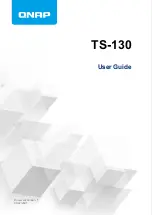
P964 APR
Cable Router with 802.11g Access Point
3-12
W
eb Based Management
Figure 3-12 Web Management – Wireless: Access Control
The “
802.11b/g Advanced
” allows user to configure data rates and WiFi thresholds.
“54g Network Mode”:
Max Compatibility - supports 802.11b/g clients
54g Only - supports only 802.11g clients
Max performance - supports only 802.11g clients and uses a proprietary method of improving performance. This mode may not
work with all 802.11g clients.
“54g Protection”:
54g Protection is a mechanism that is created for
using RTS/CTS to maximize the throughput in mixed 802.11b/g networks. When
set to 'Auto', it will use this method to maximize throughput. If the
network only contains 802.11g clients, set this to off to maximize 11g
performance. Mixed networks have an issue where a 11b client is not able to
determine that a 11g client is transmitting so it will transmit anyway and
squash the g transmission. The 54g protection will keep 11b clients from using
too much bandwidth by determining when they can transmit so not to interfere
with 11g clients.
“Rate”:
Auto / 1.0 Mbps / 2.0 Mbps / 5.5 Mbps / 6.0 Mbps / 9.0 Mbps / 11.0 Mbps / 12.0 Mbps / 18.0 Mbps / 24.0 Mbps / 36.0 Mbps /
48.0 Mbps / 54.0 Mbps
“Output Power”
:
25% / 50% / 75% / 100%
“DTIM Interval”:
DTIM interval - A DTIM interval, also known as a Data Beacon Rate, is the frequency at which an access point's beacon will
include a DTIM. This frequency is usually measured in milliseconds (ms). DTIM - Delivery Traffic Indication Message. A
DTIM is a signal sent as part of a beacon by an access point to a client device in sleep mode, alerting the device to a packet
awaiting delivery.
“Fragmentation Threshold”:
















































